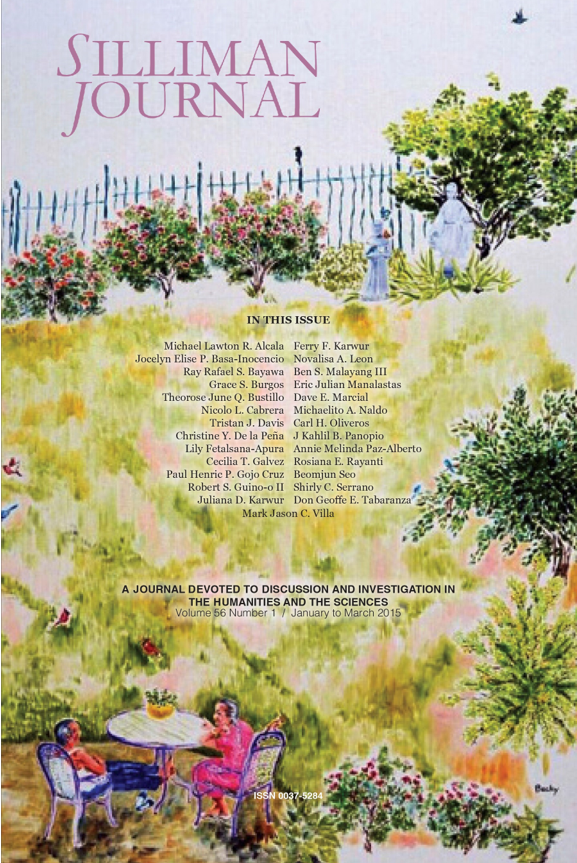Vol. 56 No. 1 (2015): Silliman Journal

As we transition from biannual to quarterly publishing, welcome to the first of four issues of Silliman Journal for 2015—our 61st year. Although we continue to be a multidisciplinary publication, majority of this issue’s papers are in the natural sciences and they convey to us the rich variety in the work that academic scientists are doing in their respective fields. This issue begins with “Rethinking How We Do Environmental Science” by Silliman University President Ben S. Malayang III who was invited to participate in the 6th International Conference on Environmental Future on the theme ”Interdisciplinary Progress in Environmental Science and Management” held at Newcastle University, UK on 18-22 July 2011. The conference was organized on the premise that “at this time, 'interdisciplinary' thinking is considered key to solving environmental problems, but it is unclear what this thinking is or would be and how it might be progressed in future.” For this essay, Malayang studied 17 conference papers and discusses interdisciplinarity according to its epistemological bases, methodological possibilities, and emerging challenges and opportunities in environmental science. In the second paper, biologist Robert Guino-o and colleagues investigate the quality of Pagatban River in Negros Oriental, Philippines, 30 years after the closure of mining operations in its vicinity. According to the authors, conditions have improved, but there are still heavy metals in bottom sediment higher than acceptable levels. Similarly, frequent SJ contributor Annie PazAlberto and fellow researchers investigate another environmental indicator—plant diversity in the forest ecosystem of a confined area in the Philippines—the Carranglan Watershed in Nueva Ecija, Luzon. The authors found many endangered species (four critically endangered), but there were also three species that could serve as potential biodiversity indicators due to their abundance. Still, many threats to the ecosystem were identified. These studies are followed by one made by agriculture researcher Lito Naldo and associates who study pig diets, in particular the supplement β-mannanase enzyme supplementation of grower-finisher pig diets with copra meal. The authors say that the Philippines is the top producer of copra around the world, but use of copra meal for pig diets is limited due to its high-level non-starch component that acts as an anti-nutritional factor. Supplementation, therefore, was necessary and found to significantly reduce costs. Our fifth paper, a team-up of University of the Philippines professor Eric Manalastas and Nicolo Cabrera who is affiliated with Stroger Hospital in Chicago, USA, looks into cigarette smoking among Filipino sexual-minority men. Eric previously discussed cigarette smoking among LGBT Filipino youth (SJ 2012 1) and the paper in the current issue provides further evidence of disparities in the Philippine population. The next paper by Rosiana Rayanti and colleagues deals with post-stroke patients in Tomohon, Indonesia. The authors acknowledge the changes in eating habits and daily activities of the study participants after stroke, and lament the lack of specific programs in Tomohon to help stroke survivors and their families. The final full-length paper in this issue is by Dave Marcial who investigates the use of information and communication technologies among teachers at higher education institutions in Central Philippines. Dave has found that teachers are familiar with ICTs, in general, but are not really taking advantage of them in instruction.

